News
Episode 5: Ghostly Glowing Nets
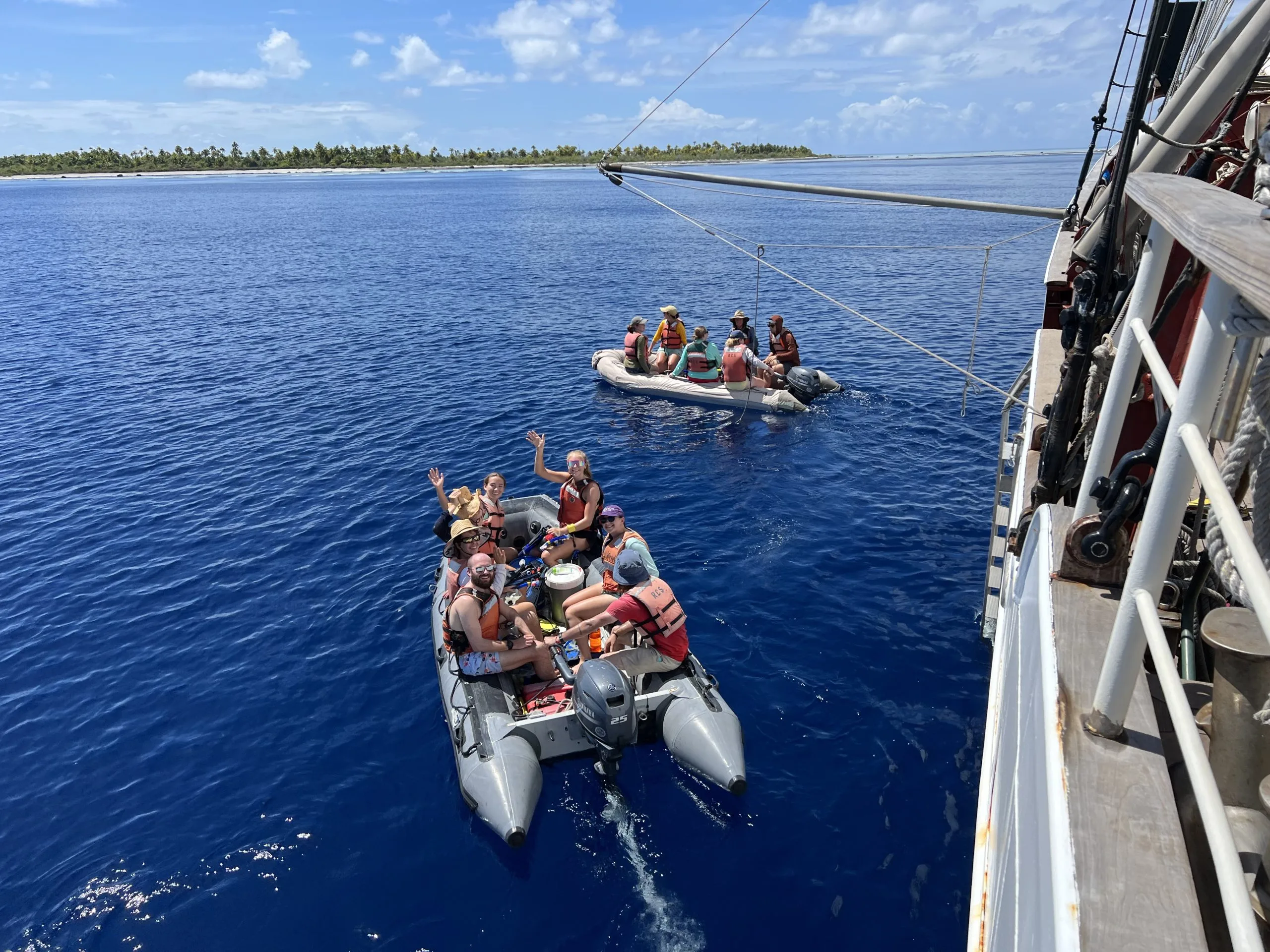
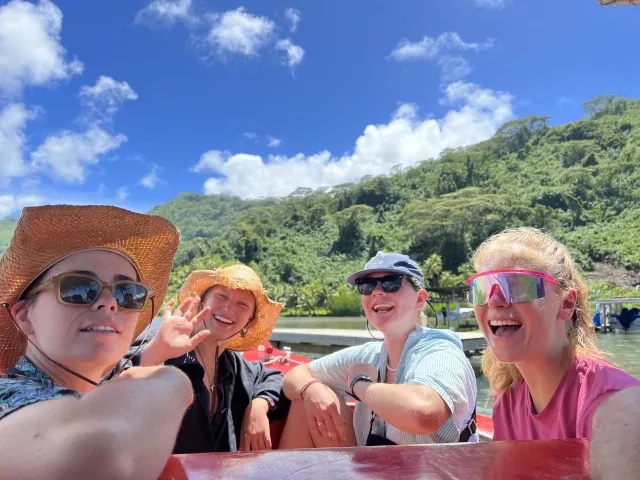
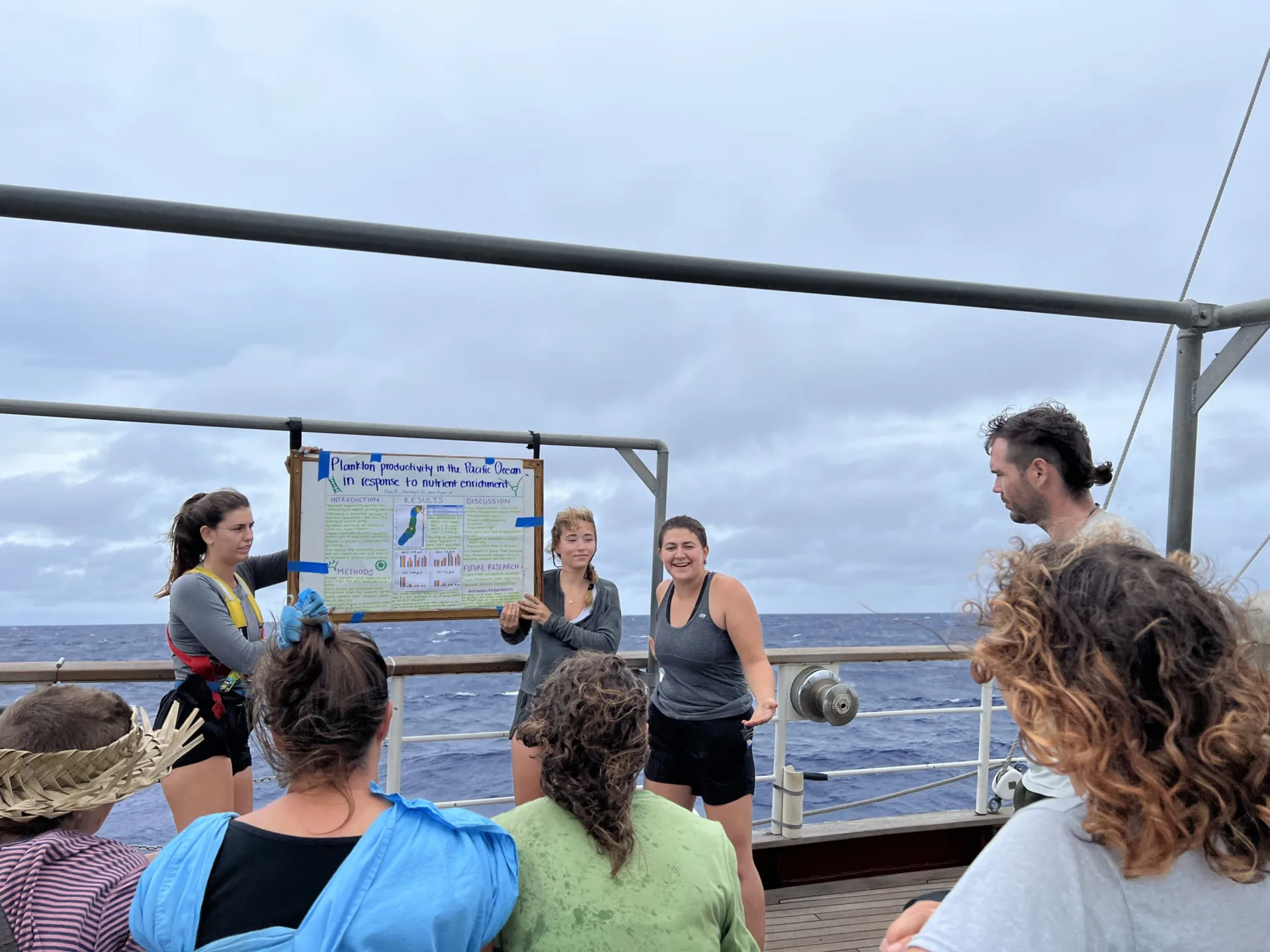
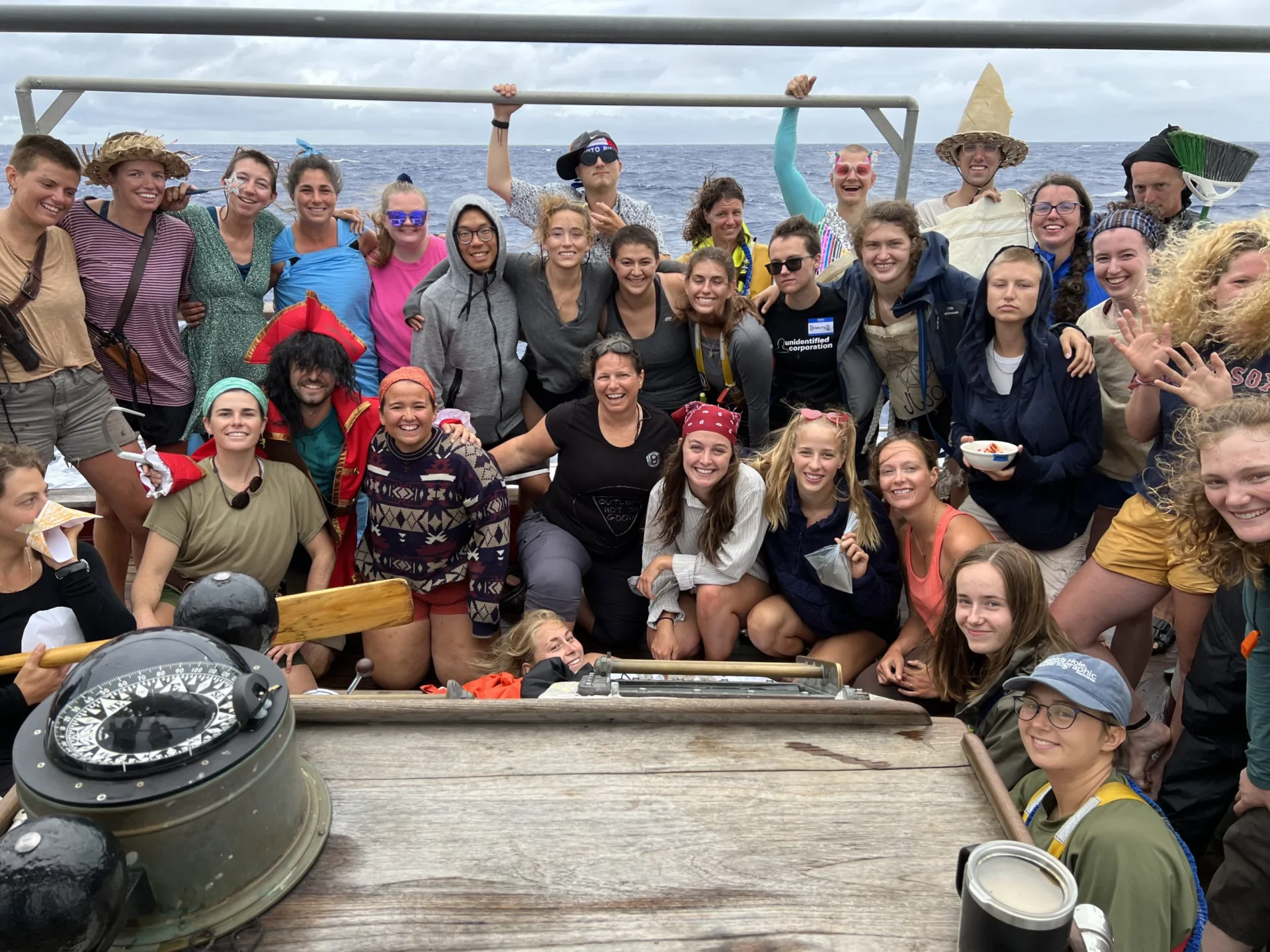
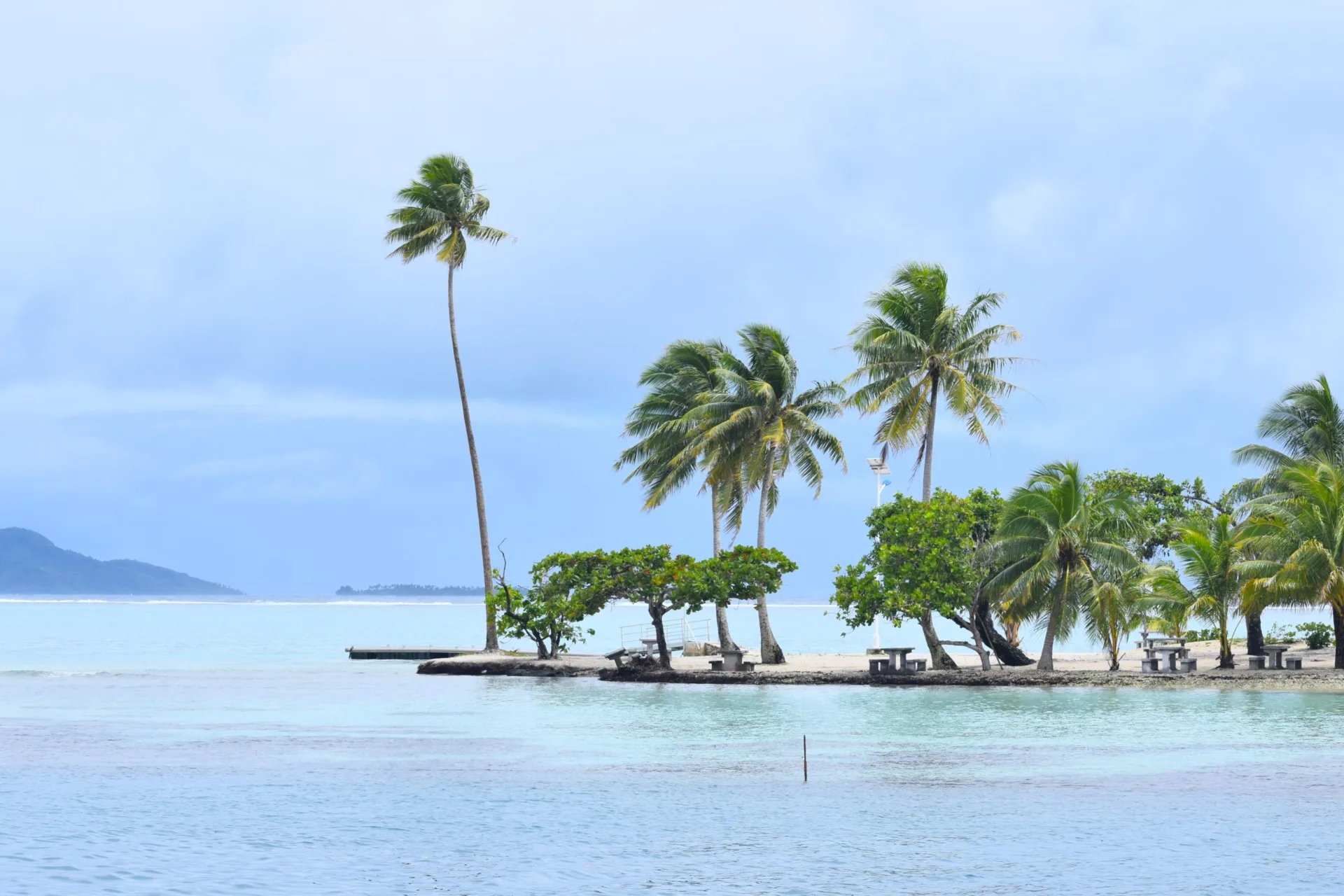
Welcome back to Stories at SEA! The fifth week onboard the Robert C. Seamans was a bittersweet week, at least for me. Students wrapped up their projects and presented them to the ship’s company on November 1st and that marked the end of academic work. We still did a few deployments of instruments out of curiosity and I continued interviewing students about their projects, but the group’s attention was turned to the joys of sailing and exploring French Polynesia; it was time for some fun in the sun! All of that meant, though, that the voyage itself was coming to a close and time seemed to be flying by as much as we all tried to hold onto every moment.
The week began with a fantastic snorkeling stop at a coral atoll called Rangiroa, part of the Tuamotu island chain. Rangiora boasts a central lagoon that is the size of Tahiti, and I highly encourage everyone to look up aerial photographs of this incredible island. I mention climbing aloft in the introduction to this episode to get a better view of the island. Climbing is a very important part of working on a tall ship, but for students climbing is purely voluntary. With a harness and two lanyards, and lots to clip onto using carabiners, once you’re aloft it is a very secure activity. And the views are not to be missed! The reef on Rangiroa is considered pristine, and we were lucky enough to see a wide array of marine life including black tipped reef sharks. What stuck out to me about the reef itself was the way it was arranged in long stripes perpendicular to the shoreline; Dr. Sarah Kingston guessed this might be because of the specific pattern of currents in the area, arranging the abundance of nutrients and organisms simply by the direction of water.
We hear from Ali Fox about her experience snorkeling for the first time ever at Rangiroa, and her PSA to all new snorkelers: you don’t have to take a deep breath before putting your face in the water! Keeghan Ryan also talks about a highlight onboard adjacent to the afternoon spent snorkeling. Projects coming to an end meant there was more time to spend with new found friends, and simply enjoy the environs more fully. I think that was something we all enjoyed in our final weeks.
I chose this episode to highlight the nets we deployed onboard because after experiencing the abundance of life at the reef in Rangiroa – and subsequent snorkeling adventures – it was easy to forget that we had been privileged to see many biological wonders of the open ocean during the course of the voyage. We hear from Dr. Sarah Kingston and Micah Strike talk about deploying a meter net, and Aster Van Dyke fills in the end of the story which involves counting 100 individual organisms from a sample scoop of zooplankton from the cod end, or collection container, at the end of the net. The nets we deployed – neuston and meter nets – held so much intrigue for me. We never knew exactly what we would catch, but whatever the catch was, it provided a window into a world, teeming with life, that was going on right beneath us. We were in their world; the world of phytoplankton, crustaceans, mollusks, and cephalopods. Without the Robert C. Seamans beneath our feet, we would’ve been entirely helpless in their world; these tiny, fascinating creatures were far more well-adapted to the ocean than we will ever be. It was a humbling perspective.
From Katie Power, Ali Fox, and Keeghan Ryan we hear about what it was like to present final projects onboard. The presentation day was fairly rough with steel gray skies, 8-10 foot swells, and chilly winds – not exactly the weather I expected approaching Tahiti. Ali and Keeghan, as well as Brighton Hedger, their third group member, did indeed have to shout as they presented, to be heard over the wind. The day was also our “local apparent Halloween ” (a play on the phrase local apparent noon which just refers to the time when the sun is directly overhead at your specific position) which meant there were great costumes. The lost boys of Peter Pan included Captain Hook and Tinkerbell, and Ali and Jackie, the head steward, were Lexan (like tupperware) cookie containers. My favorite costume was Lexi Valachovic’s who dressed up like a furled sail, she wrapped a white bed sheet around herself and tied it up, the resemblance was striking! (No pun intended).
As for the projects themselves, Ali, Keeghan, and Brighton talk about their phytoplankton incubation project. They embarked on a project that was new to SEA, and what they learned will assist future groups looking to advance what we know about phytoplankton growth even farther. Part of doing research onboard is certainly about trying to stick to replicable methods and decreasing sources of error, but another aspect is just learning to stay flexible and work with what you’ve got. We also hear from Kris Riddle talk about his project which he worked on with Henry Hua and Diego Fernandez. They grappled with phytoplankton biodiversity and nutrient and light distribution. Ultimately, they drew some conclusions about how nutrients affect the size and total abundance of phytoplankton in different areas of the ocean.
From Ali and Keeghan, we hear about daily life onboard and some of what makes island hopping so fulfilling compared to open water sailing. From Rangiroa we headed to Tahiti to clear customs and spend a happy day onshore stretching our legs, trying new food, and exploring the capital, Papeete. We left the next morning for Raiatea, and I was so glad we still had more time left in our voyage. Raiatea is not an atoll, but it does have a beautiful fringing reef where the surf breaks in raucous waves but leaves the interior of the lagoon calm. We maneuvered around motus, small islets of coral that poke above the sea surface, to eventually dock at Raiatea’s main town, Uturoa. Here too, we dispersed in small groups to wander around parts of the island. One day at Raiatea was set aside for a ship’s company field trip where we were shown incredible sites by a guide.
As I’ve written these blog posts and puzzled through arranging the episodes, I’ve thought a lot about whether I should include sections about French Polynesian history and culture. As it was, those topics did not play a big role in our trip itself. Ultimately, I feel unqualified to provide a summary of French Polynesian history that would be worthy of the diverse events, stories, and voices in the region. I do recommend Sea People by Christina Thompson for people looking to learn more about Polynesian voyaging and wayfinding.
For this week’s ocean moments, we hear from Emily Rogers, Rikki Held, Aster Van Dyke, Olivia Chiota, and Maggie Grant, one of the deckhands aboard the Seamans. Their stories hail from Cape Cod to Maine to California, reminding all of us how different people’s experiences with and of the ocean can be. The impact of childhood memories was a theme that linked all of their stories too, a theme I only really noticed as I built the episode. Despite having more recent memories of the ocean, these five people all looked to their childhoods for the ocean memory gems most meaningful to them. And that is where we leave the fifth week, still in Raiatea for one more day before heading onwards to Bora Bora, our second to last port stop. Next week will be the last episode of the show; we’ll highlight the last remaining projects, hear some final highlights, and reflect on what makes the ocean meaningful to study. As always thanks for listening and fair winds! Many thanks to Ali Fox, Keeghan Ryan, Micah Strike, Dr. Sarah Kingston, Aster Van Dyke, Katie Power, Brighton Hedger, Kris Riddle, Emily Rogers, Rikki Held, Olivia Chiota, and Maggie Grant for sitting down to chat with me for this episode, to the entire crew of the Robert C. Seamans for letting me take time each day to interview in the aft cabin, and to Dr. Sarah Kingston for her photograph that was the inspiration for the podcast cover art.